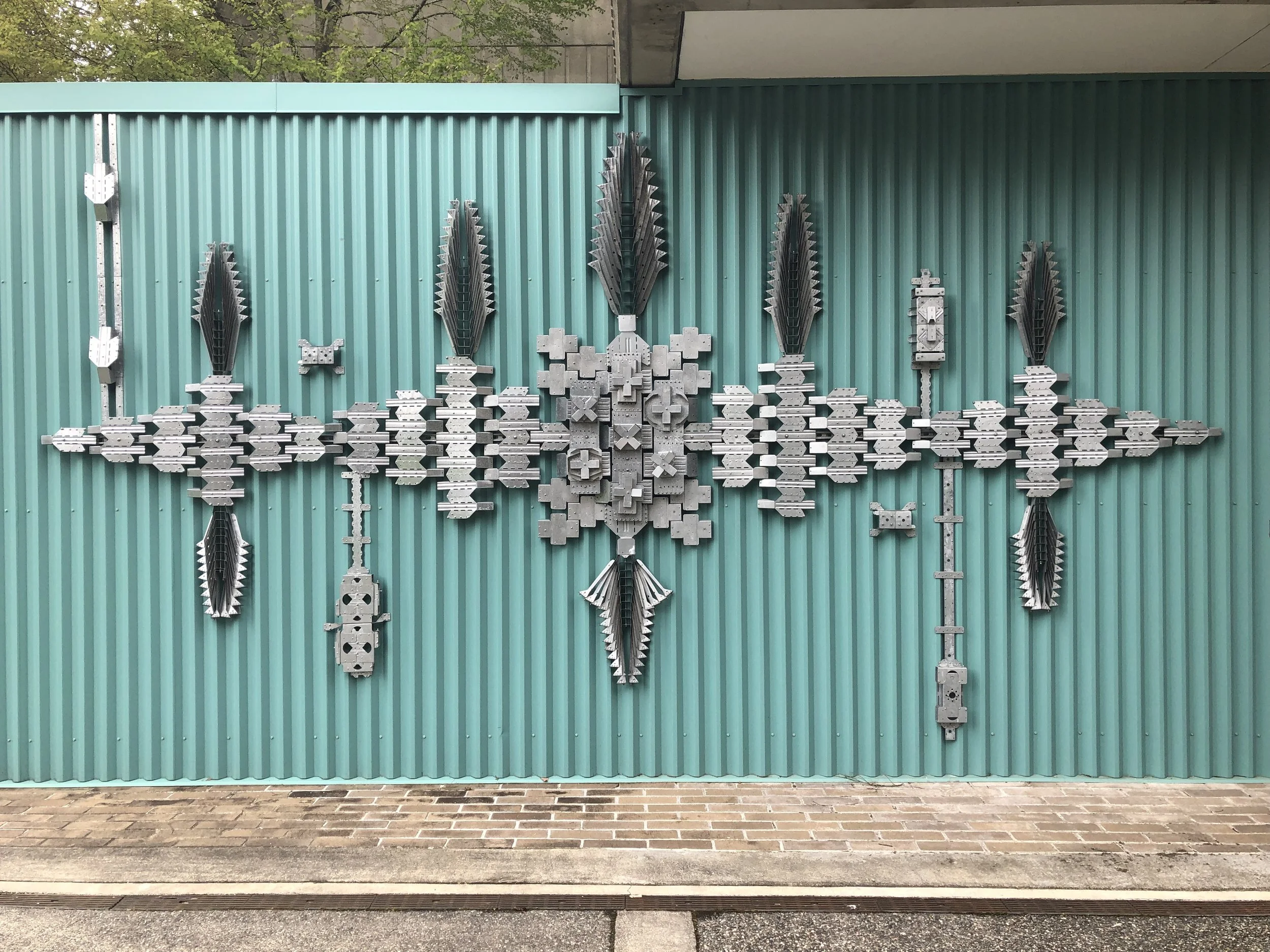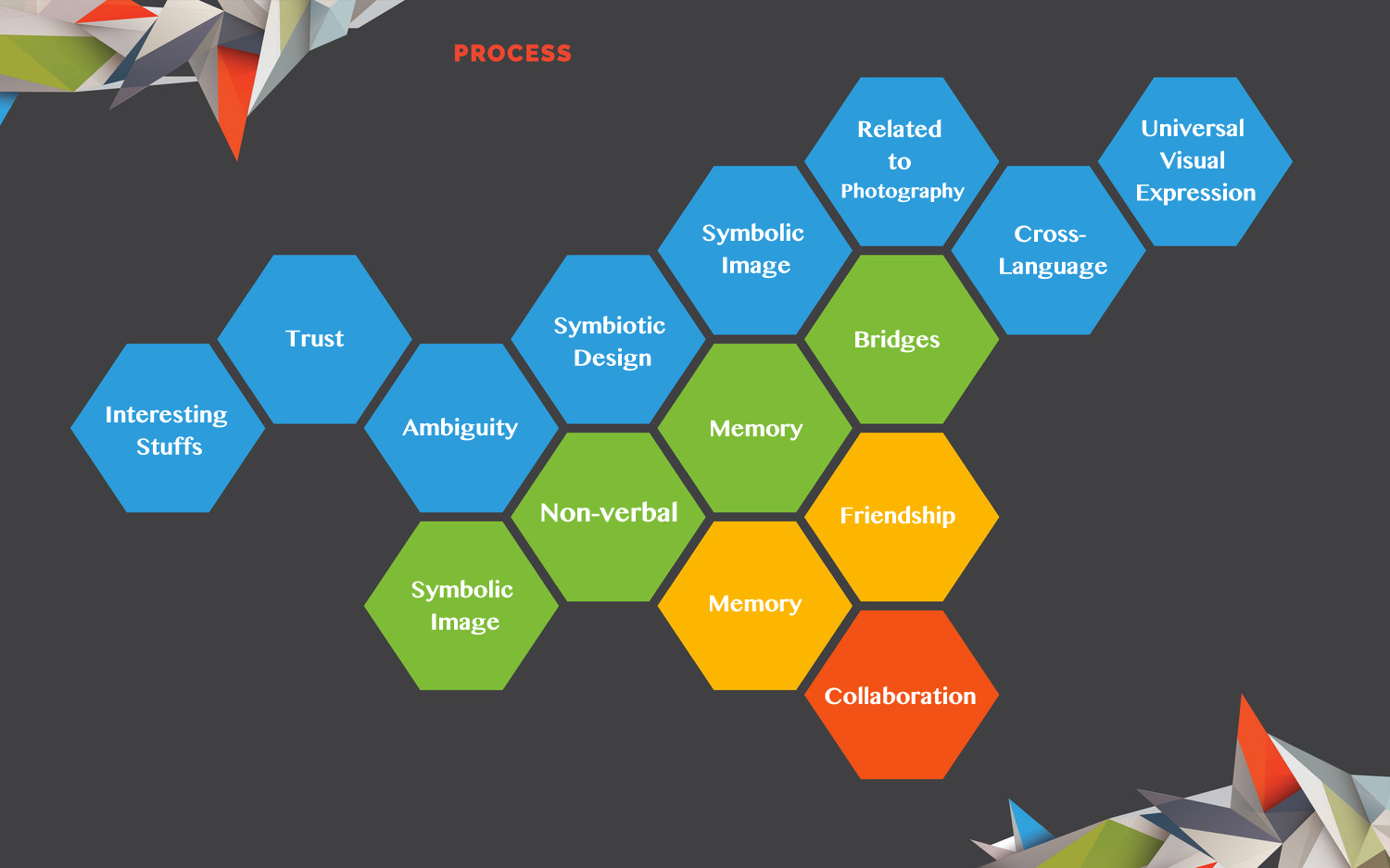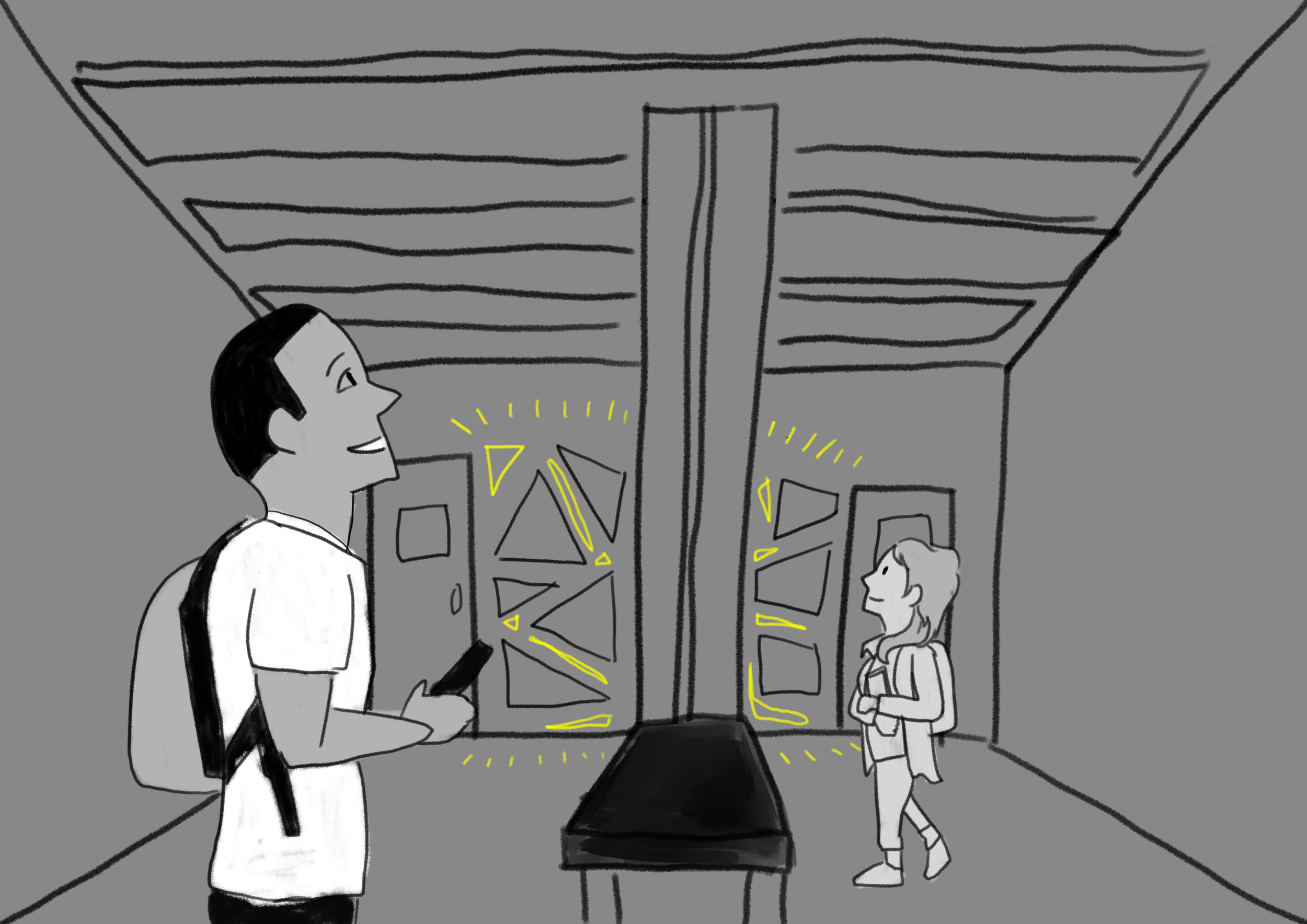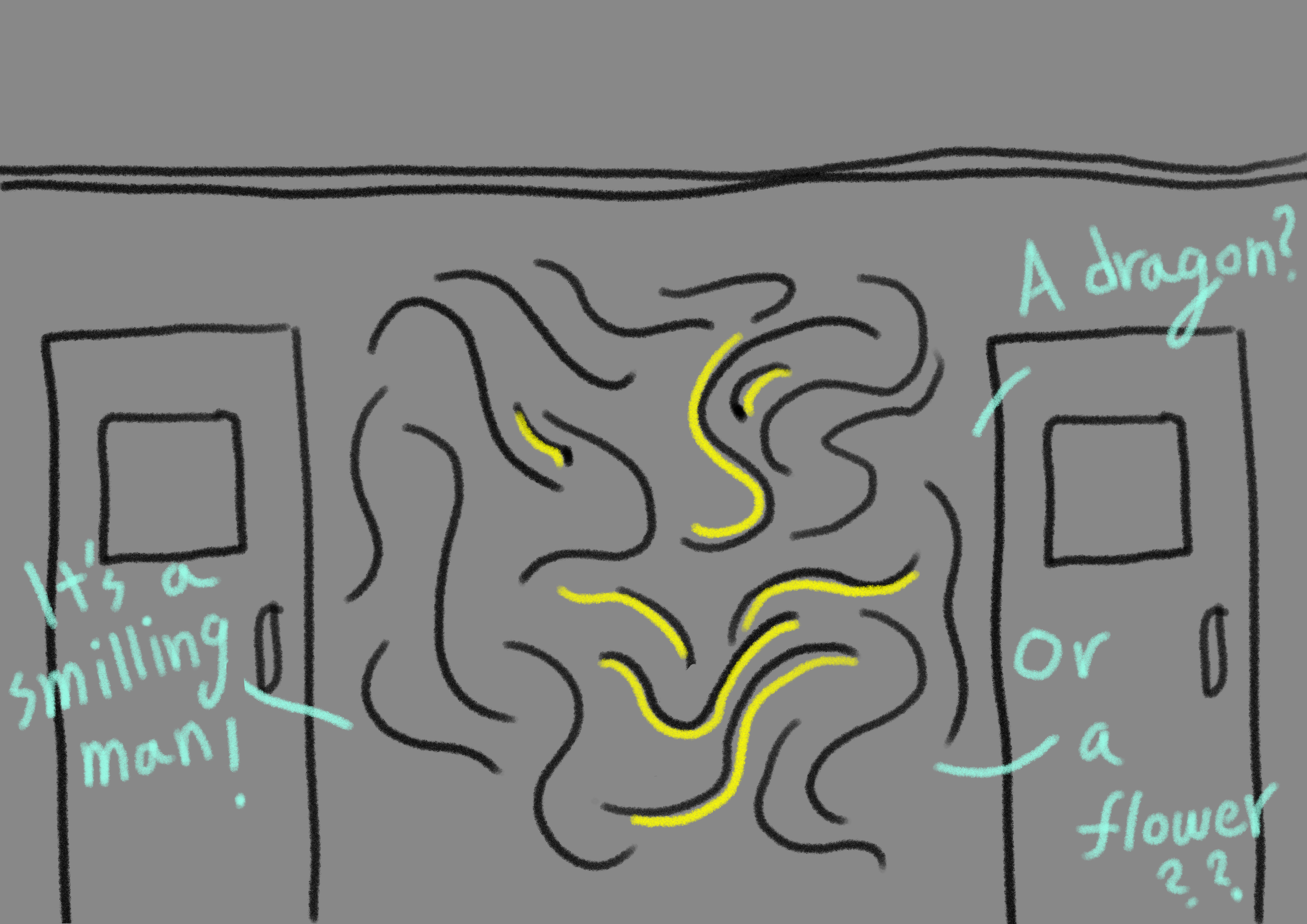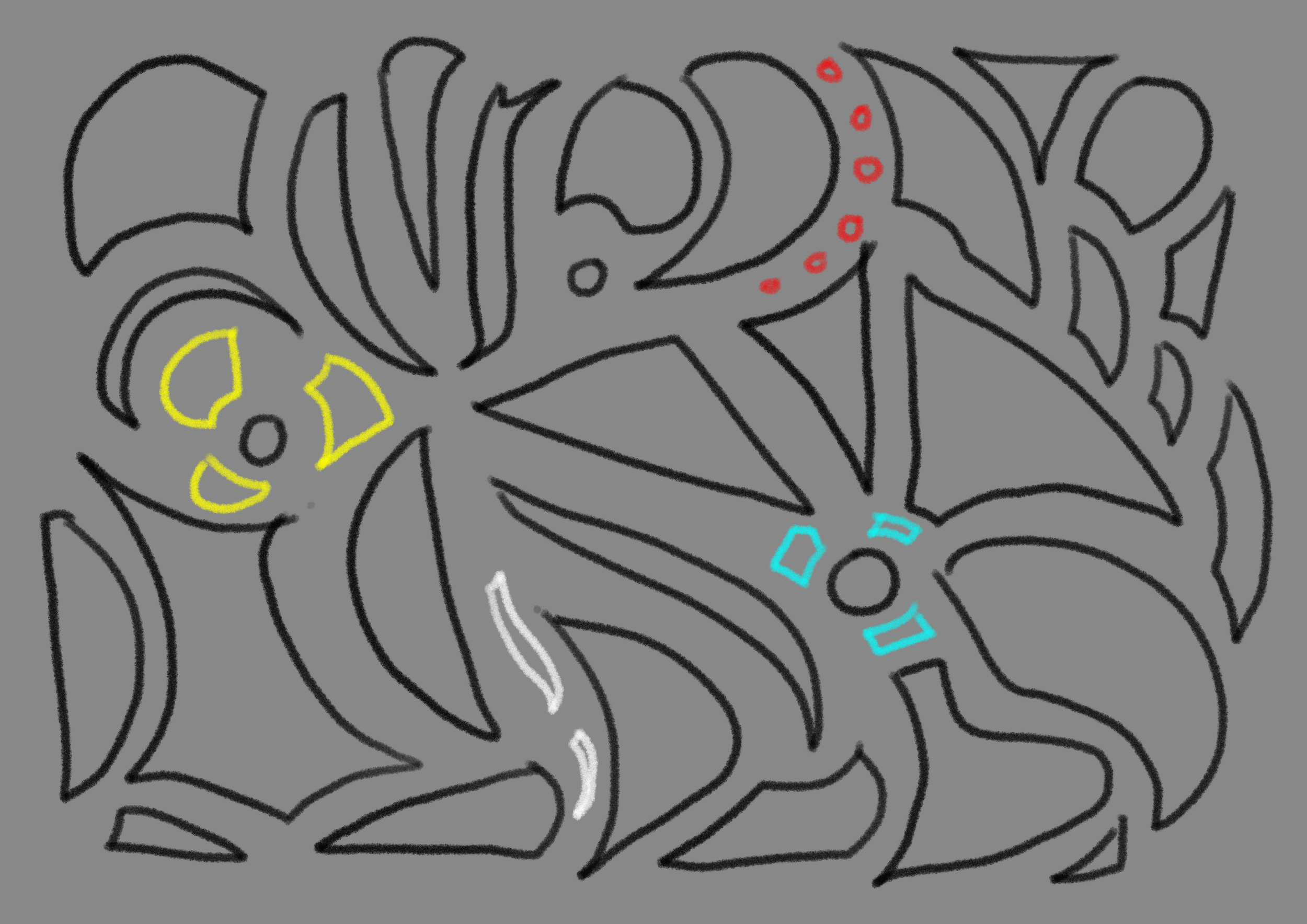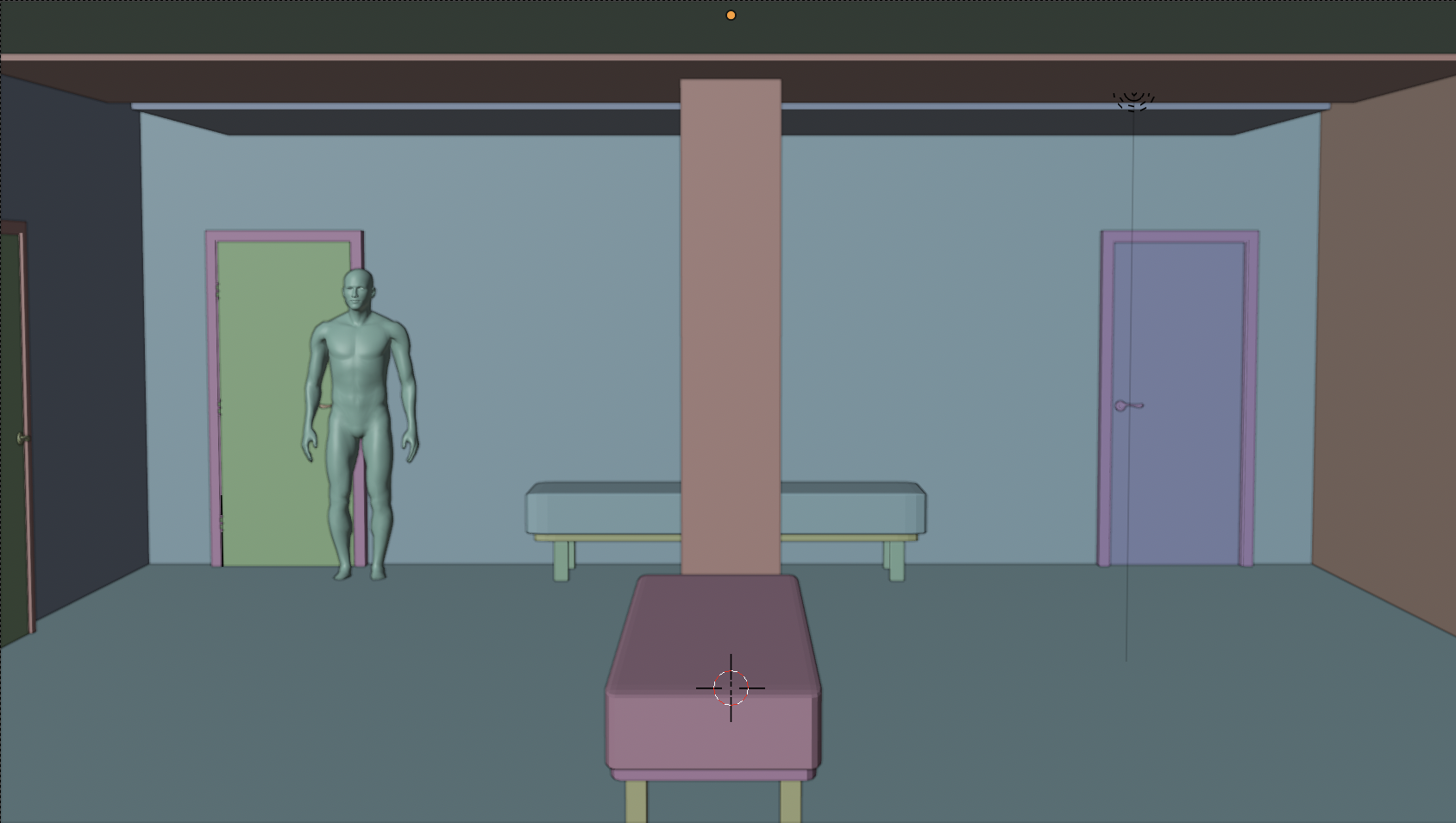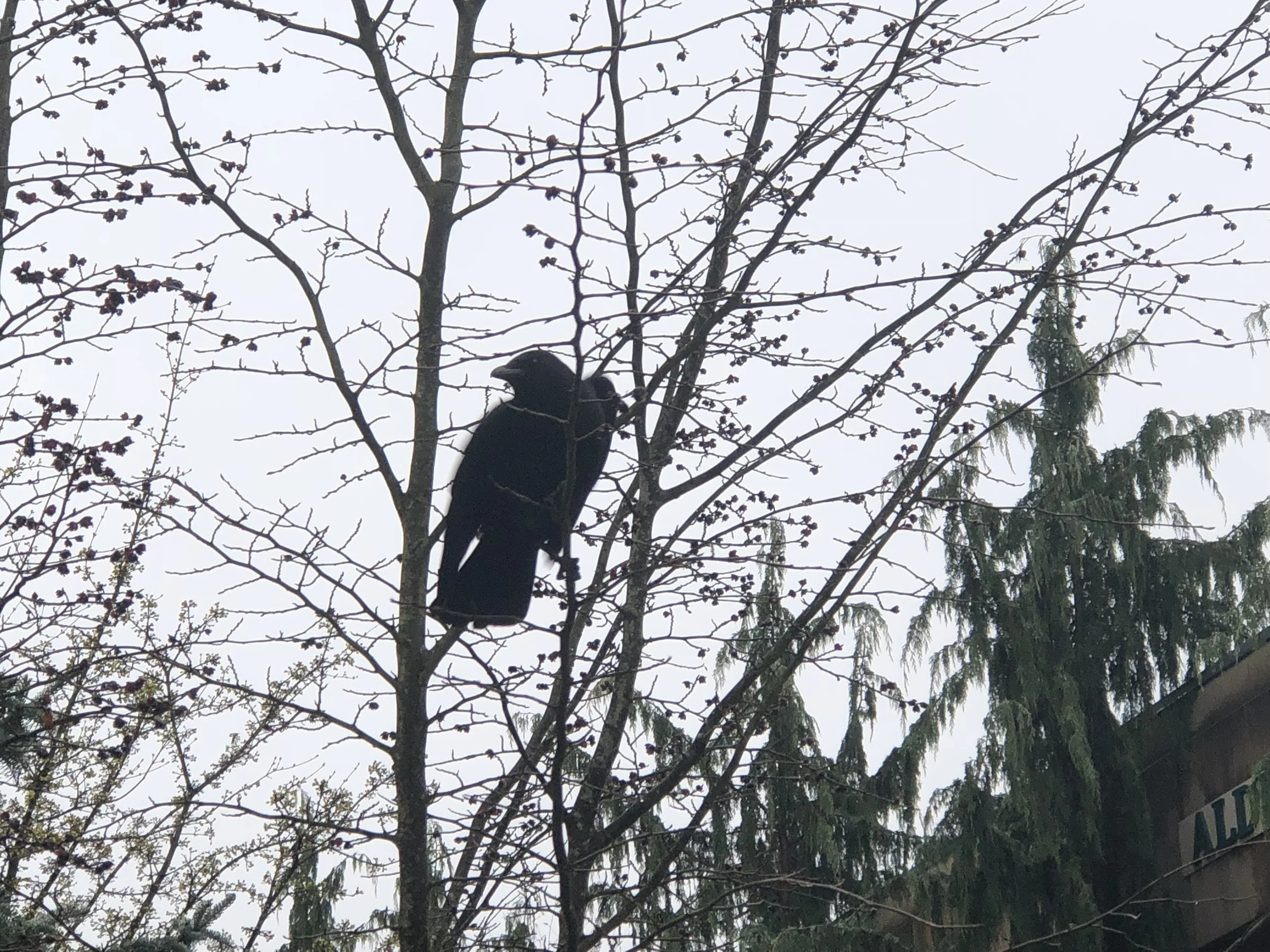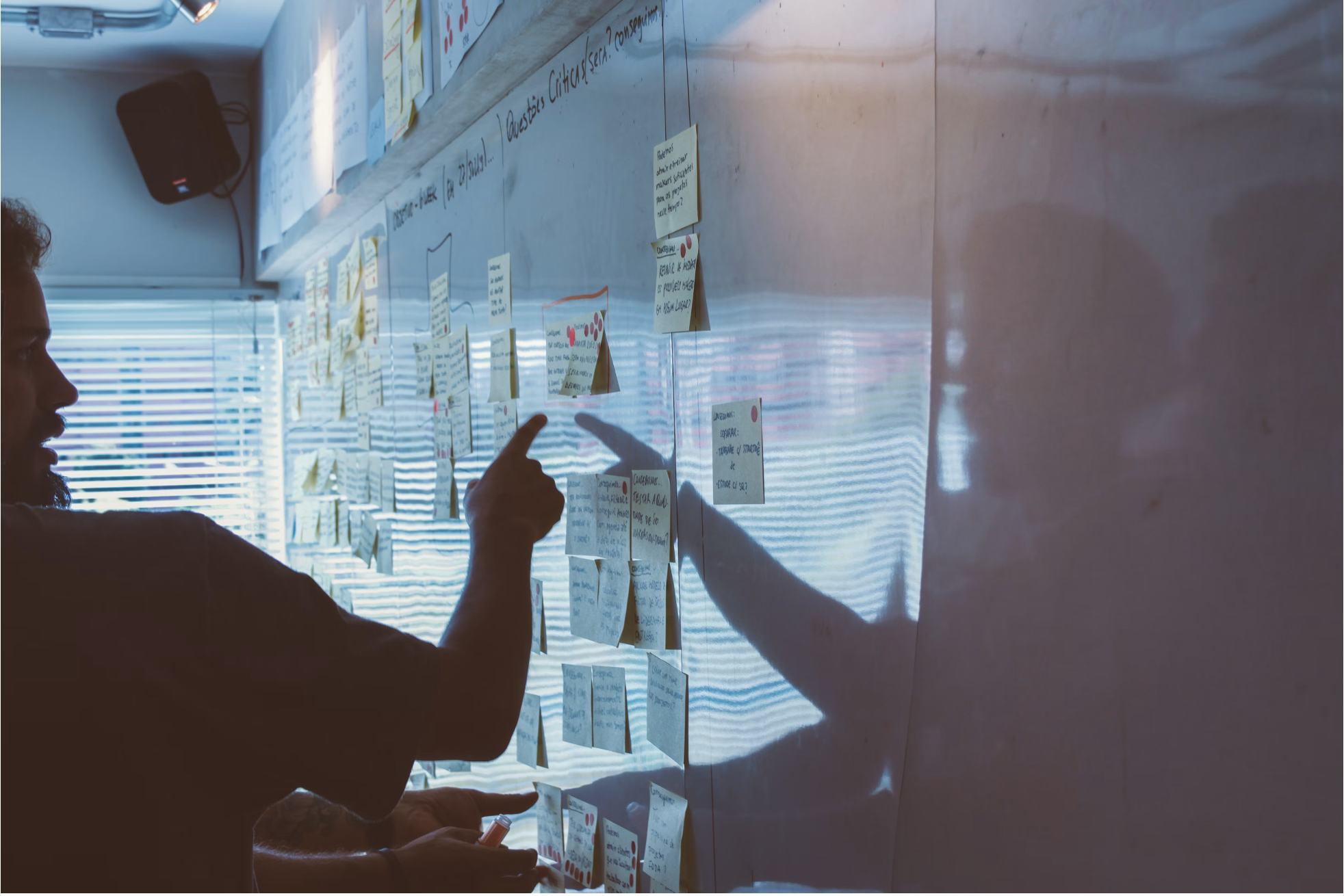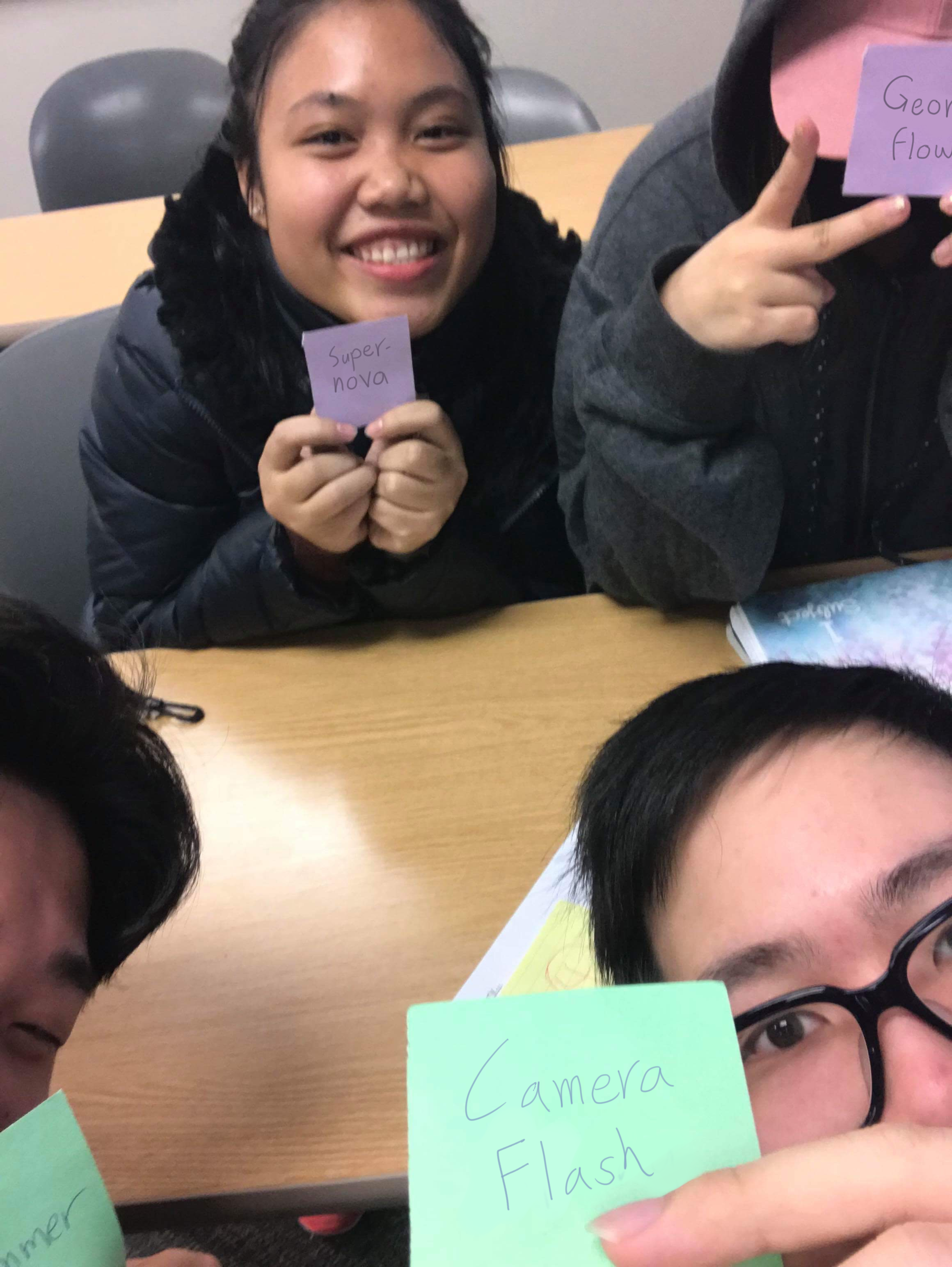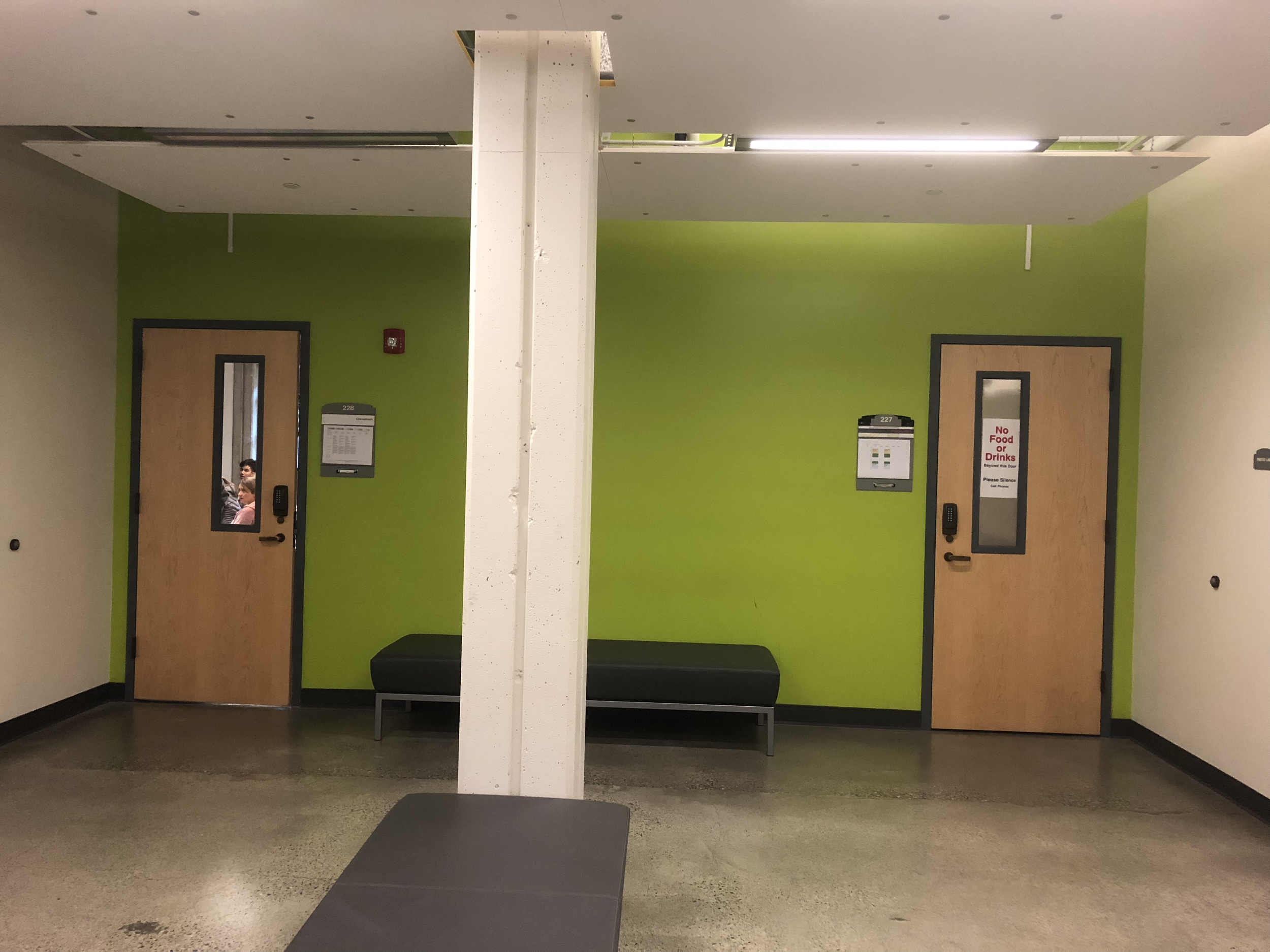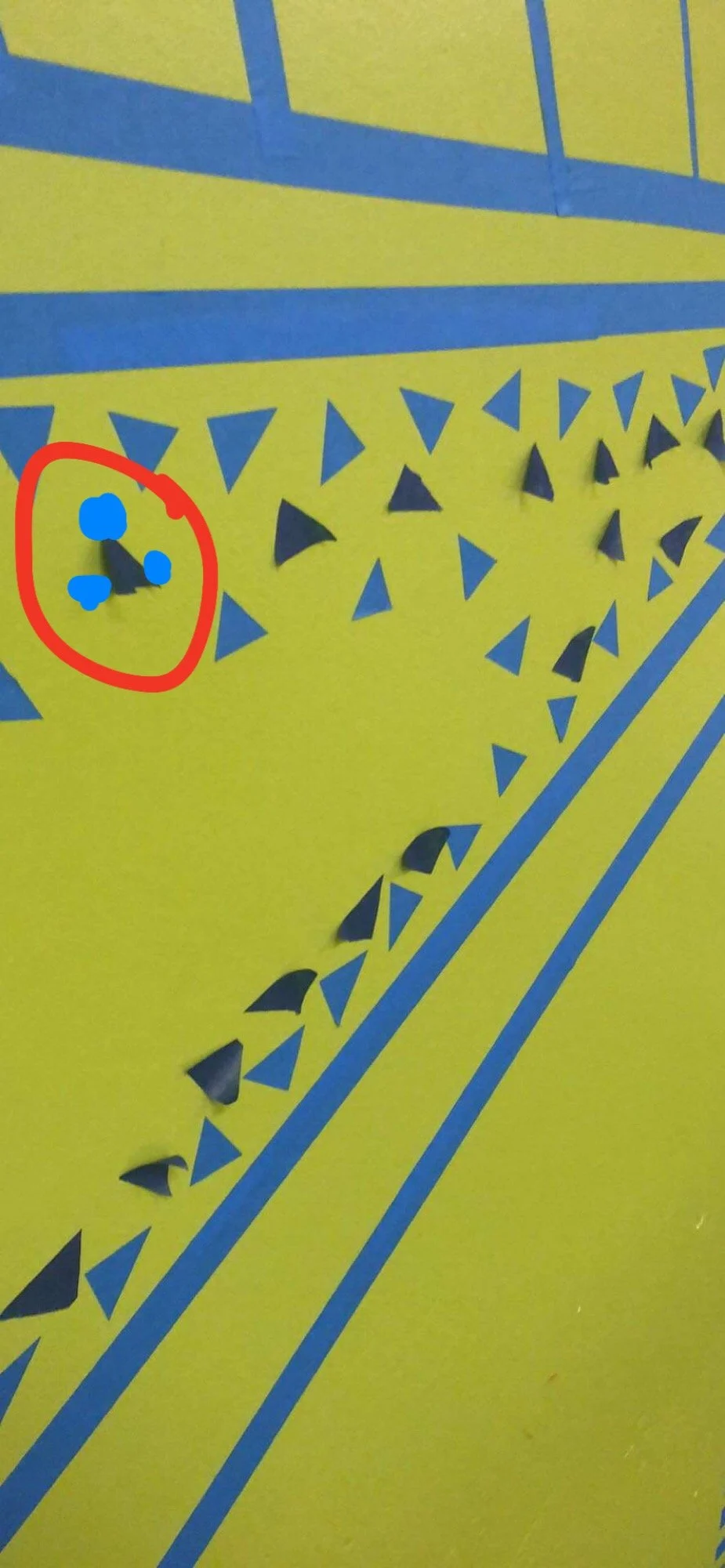
Flash, an Interactive Art for EDC
The Challenge
The photography class hallway is not
considered a worthwhile place to stop
In the corridor in front of Photography Class 227 on the second floor of Edmonds College's Meadowdale Hall, students only use this area as a place to take a break and prepare for class. Students' impressions of corridors are only monotonous decoration, empty space, and students and faculty coming and going. Although few people associate corridors with art, the rectangular space of the corridor in front of the photography classroom is a perfect place to promote art and conversation.
Client
Edmonds College
Year
2018
Duration
3 Months
Form
Interactive Art and Public Art
Tools & Material
Sketch, Adobe Photoshop, Blender 3D, Painter's tape
My Role(s)
Project Manager
I formulate the design theme, promote the team's design activities, teach various design patterns and concepts to members, and use Blender 3D and Adobe Photoshop to make drafts and apply them on a 3D module to show the final rendering results.
3D Artist
As the project manager, I serve as the outreach and communications liaison to stakeholders (i.e., Edmonds College Visual Arts Department co-chair Audineh “Audi” Asaf) and our team. I outlined the work for the team, assigned work to team members, designed communication and content management systems for project files and my team, and set internal deadlines.
Executive Summary
Goal
Design a public art piece to make students aware of the public realm of the hallway in front of the photography classroom and use art to promote conversation and interaction.
Solutions
Flash is an interactive art piece made from painter's tape designed to allow students and staff to view this public art through different angles and stimulate conversation.
Research
We began to study different forms and media of interactive art.
In order to understand the specific meaning of the corridor in front of Photography Class 227 classroom to its users, that is, the students, we conducted interviews with students in different courses.



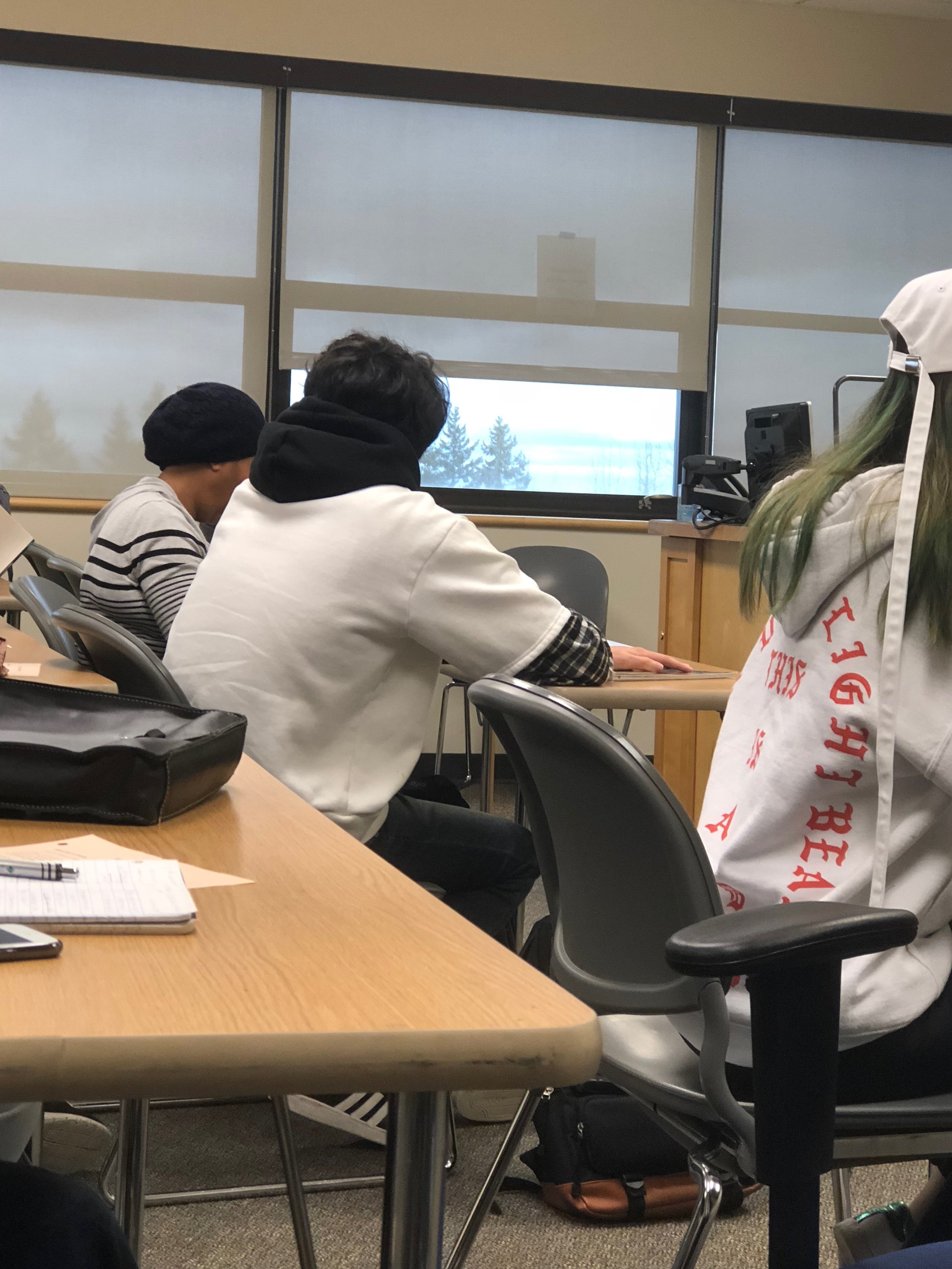
“Without photography classes I rarely spend time in the hallway.”
— Tosei Hayakawa, biology student
Insights: From our interviews with students we learned that most students’ impression of the corridor is that of a boring and unattractive space, while a few are even willing to stop just to wait for the class to begin.
Public Art Probe
We set up a public art probe at the Edmonds College (formerly Edmonds Community College) to allow students to visually express why they were on campus that day and what they thought about public art that integrated with the environment because of the shared interest is the first step in establishing collaborative interactions.
Insights: On the basis of previous public art related to the environment, it has lowered the entry threshold for people who lack art background and visual communication sensitivity, making this event more suitable for users of various personality types.
Pop-up Art Probe
Crazy Eights
I used the "Crazy Eights" strategy where the team members and I had 8 minutes to sketch out as many sketches as possible and pick the most creative designs.
Design
01
|
02
03
Spatial Mapping
Rendering Results
Solution
“I usually just pass by the hallway, nothing noteworthy.”
Interaction Art
— Truc Ngoc Nguyen, history student
People who enjoy art with friends tend to get along better with other strangers who enjoy public art. Additionally, when people see a group of people joining together to enjoy public art, they are more likely to join in.
“I like to watch the people coming and
going in the corridor, otherwise I would
rather stare at my phone to check
updates about upcoming courses.”
— William Serey, math student
“I love the industrial feel of this public art,
it reminds me of how it (the building) works inside.”
— Anwar Bou-Hamdan, computer science student
The staggered line design through the different spaces of the column and the wall encourages students to appreciate the work from different angles and inspires their imagination.
A variety of abstract graphics will form the overall design and imply a clear design theme, aiming to allow students to find artistic symbols and messages in the physical space.
Over the course of ten weeks of research, we identified three stages needed to design and produce this optical illusion interactive art.
Collect Physical Space Samples
Before making a 3D model, it is indispensable to collect physical space samples. This can help 3D artists create 3D models of the venue more accurately.
Since it is difficult for 3D artists to understand the exact space of the site and the visual expressions of the design from 2D concept art and documents, the team needs to capture photos of the site from different angles and directions as much as possible and provide them to 3D artists to promote the production of 3D modules.
We captured some artistic moments on the EDC campus and invited students to participate in conceptualizing public art and explore the motivations behind interactive art as a medium for collective expression.
Optical Illusion Design
Insights: Interactive art provides participation opportunities that are different from general public art. Through the highly participatory nature of interactive art, participants can immerse themselves in the art environment and appreciate the details in the works and the artistic meanings at different levels with others.
Preliminary Concepts
Let students interact with the work to stimulate them to interact with others and share different perspectives.
For the design concept for this interactive art, we started with eight themes, identified four pillars, and then boiled them down into one: collaboration.
All participants responded with whimsical responses that nonetheless presented their unique perspectives on various campus arts moments. They explain how some public art blurs the boundaries of a work, allowing users to interpret different meanings of the work in their own interpretation.
“Art helps me understand the world around me and in turn helps me reconnect with who I really am.”
— Katy Gao, hospitality & tourism Management student
Ideation
DesignOps
Based on the interviews and research conducted by the team, I led group discussions in and outside the classroom and developed design principles to determine three preliminary concepts for this public art project.
Multi-image Composition
|
3D modules allow team members to quickly have a better understanding of the location, scale, and presentation of interactive art and how to optimize it.
I used Blender as my primary previs tool to visualize the space in the hallway to allow the team to understand the viewer's position, scale and movement, as well as the interrelationship of the design with the environment. Since Blender is a free and open source 3D modeling software, its learning curve is gentler and more friendly than Maya, making it suitable for small teams to carry out projects of average size.
After a week of discussions about stakeholder feedback, project goals, technical constraints, and user feedback, my team members and I went through 4 design iterations and arrived at the final design.
We worked on it for five weeks and plan the purpose and process of usability testing. The purpose of conducting usability testing is to invite passing students to become participants and observe the interactive art pieces we create from different angles and distances, and share their opinions with those watching nearby. Our team will take turns assigning a member to gather feedback from participants and understand potential points for improvement in our work.
|
By using Blender and Adobe Photoshop to render final design images, teams can overcome time and budget constraints and achieve financial success.
Rendering high-fidelity 3D modules is time-consuming. Since my team didn’t have much time, we used Blender mid-fidelity rendering and texturing with Adobe Photoshop to create the final design for the team to start creating the interactive art.
Iteration
Usability Testing
01
|
Non-3M Painter's Tapes Peel Off
Team member Yasamin Atarodi points out that the decorative parts made with non-3M dark blue Painter's Tapes were partially peeling off.
In response to this situation, I used Photoshop to create a mockup and suggested to the team to cut out 3M Painter's Tapes into smaller triangles and stick them on the corners of certain decorations parts as a design improvement plan. 3M Painter's Tape is known for its good adhesion and does not damage wall paint when removed.
03
|
Inconsistent Work Schedule
Since each team member has different course and family schedules, my team and I have encountered situations where everyone has different availability.
In response to the concerns expressed by team members, I set up an online discussion group to allow team members to post when they could cooperate with the team's production. Based on this information, I developed a project schedule for the team members and assigned the work they were responsible for so that the team's work could be completed before the deadline.
02
|
The Tapes at the Seams Are Structurally Fragile
Due to the fragile structural design of the piece's seams, the painter’s tape on these parts could easily come off in entirety.
I held team meetings and formulated possible solutions to issues where the design structure was fragile. With the help of the creative ideas of the team members, the solution we came up with was to adhere the tapes in an overlapping manner to strengthen the overall design structure and create a three-dimensional visual expression.
Reflection
Time is limited
In the prospect of this project, I realized that Augmented reality (AR) technology could allow students to better share and record the details and meanings in the interactive art they discovered. As I was creating the 3D model, I also learned that if students could build on existing interactive art and create and share their own artistic markup on their phones, they would be able to have more conversations and connections with others, which is what I will consider in my future projects.
AR allows more users to join
Due to time constraints, my team cannot present absolutely perfect works to users. This taught us how to strike a balance between deadlines, budgets, sophistication of work, and team labor because stakeholders were also under time pressure to get the results of the project.






